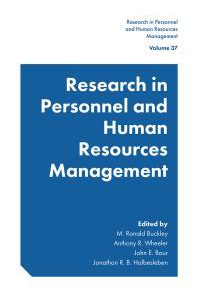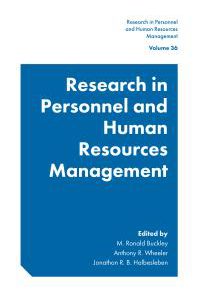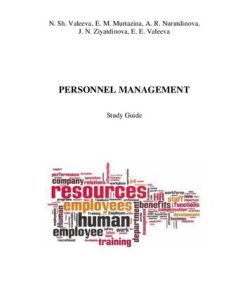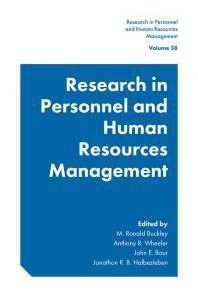Research in Personnel and Human Resources Management 1st Edition by M. Ronald Buckley 9781800430778 1800430779
$50.00 Original price was: $50.00.$25.00Current price is: $25.00.
Research in Personnel and Human Resources Management 1st Edition M. Ronald Buckley – Ebook Instant Download/Delivery ISBN(s):9781800430778, 1800430779
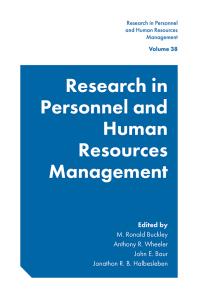
Product details:
- ISBN 10:1800430779
- ISBN 13:978180043077
- Author: M. Ronald Buckley
Research in Personnel and Human Resources Management
Table contents:
List of Contributors
Chapter 1. Is Leadership more than “I Like my Boss”?
Abstract
Introduction
Liking: Primary Dimension and G Factor in Leadership
Foundations
What Is Liking?
Liking Basis and Levels of Analysis
Etiology of Liking
Operationalization of Liking
Relationship and Task Leadership: Secondary Dimensions and s1 and s2 Factors
What Are Relationship Leadership and Task Leadership?
What Levels of Analysis?
Leadership Approaches: Tertiary Dimensions and t1 to tn Factors
Ohio State, Contingency Model, and Related Leader Styles
Transformational, Charismatic, and Related Leader Styles
Transactional, Contingent Reward/Punishment, and Management-by-Exception Leader Styles
Values-based Leader Styles
Directive, Delegative/Participative, and Related Leader Styles
Leader–member Exchange
Empowering Leadership
Paternalistic Leadership
Negative/Dark and Positive/Bright Leadership
Leadership Approaches Beyond Liking and Task and Relationship
Leader Skills, Status, and Emergence
Vertical Dyad Linkage
Individualized Leadership
Leader–Follower Dyad Relationships
Shared Leadership
Team Dynamics Leadership
Collective Leadership
Network Leadership
Multi-level Authentic Leadership
Leader Styles and Multi-level Charismatic-Ideological-Pragmatic Leadership
Additional Considerations
State of the Field
Limitations
Future Research Directions
Implications for PHRM
Conclusion
References
Chapter 2. Mindfulness and Relationships: An Organizational Perspective
Abstract
Purpose and Scope of Chapter
Mindfulness: Conceptualizations, Historical Origins, and Applications
What We Know About Mindfulness from Organizational Psychology
Benefits of Mindfulness for the Self
Relational Benefits of Mindfulness
Summary of Research from Organizational Psychology
Research on the Interpersonal Outcomes of Mindfulness Outside Organizational Psychology
Mindfulness in Romantic Relationships
Effects of Mindfulness on One’s Own Outcomes
Effect Mindfulness on Partner Outcomes
Parent–Child Relationships
Effects of Mindfulness on One’s Own Outcomes
Effects of Mindfulness on Child Outcomes
Mindfulness in Healthcare Settings
Effects of Mindfulness on One’s Own Outcomes
Effects of Mindfulness on Patient Outcomes
Mindfulness in Educational Settings
Effects of Mindfulness on One’s Own Outcomes
Effects of Mindfulness on Student Outcomes
Summary and Integration of Research Outside Organizational Psychology
A Framework for Understanding the Mechanisms Linking Mindfulness to Work-related Relational Phenomena
Pathway 1: Cognition
Extension to Relationships
Pathway 2: Emotion
Extension to Relationships
Pathway 3: Behavior
Extension to Relationships
Potential Moderators
Individual Stress-Proneness
Occupational / Job Stress
Relational Stress
Interdependence
Situational Strength
Extension of the Proposed Framework
Leader–Subordinate Relationships
Mentoring Relationships
The Work–Family Interface
Intergroup Relationships
Important Next Steps for Advancing Research on Employee Mindfulness
Unique, Additive, and Multiplicative Effects Cognition, Emotion, and Behavior
Starting Points and Cyclical Patterns
Better Understanding of Cognitive, Emotional, and Behavioral Sub-processes
Conceptual Considerations
Differences in Mindfulness as a State, Trait, and Intervention
Conceptualization and Measurement of Mindfulness
General Versus Relational Mindfulness
Concluding Thoughts
Note
References
Chapter 3. Dyads of Politics and the Politics of Dyads: Implications for Leader Development
Abstract
Theoretical Underpinnings of DPLD
Identity Theory
Sensemaking Theory
Social Learning Theory
Characteristics of DPLD
Originating from Interactions with One’s Directing Supervisor
Focused on Understanding Social Behavior that is Idiosyncratic, Spontaneously Occurring, and Bereft of Documented Guidelines
Driven by Leader Cues Regarding Social Interactions
Interactional or Observational
Supports Threat-reduction and Opportunity Achieving Objectives
The Role of DPLD in Effective Political Leadership Behavior
Implications of DPLD on Intermediate Leader Effectiveness Linkages
Political Skill, Knowledge, and Phronesis for Effective Political Leader Behavior
Boundary Conditions Impacting the Effectiveness of Political Leadership Behavior
Evolving Nature of DPLD
Methodological/Research Expectations of DPLD
DPLD as an Event-based Phenomenon
The Importance of Considering Endogeneity
Discussion and Future Research
Conclusion
References
Chapter 4. The Future of Unions in the United States
Abstract
Introduction
Future Directions Conceptual Framework
Past Research
What Is the Current State of Unions in America?
Do Workers Want Unions?
A Baseline Estimate of Union Density to 2050
How Much Do Unions Have to Grow to Close the Gap?
The Bankruptcy of Traditional Organizing
New Models of Unionism
The “Gig” Workforce
Traditional “Business” Unionism
Alternative Models of Union Representation
Portfolio Unionism
Mapping Portfolio Unionism onto the Evolving Workforce
Digital Organizing: Lowering the Cost of Joining a Union
Restructuring Labor Unions
Financing a Reconfigured Labor Structure
Diversity and Inclusion
What a Revitalized Labor Movement Means for Society
Conclusions
Future Research
References
Chapter 5. Prosocial Advocacy Voice in Healthcare: Implications for Human Resource Management
Abstract
Introduction
The Healthcare Context
Patient Safety and Workplace Voice
The Complexity of the Healthcare Setting
Patient Safety and PAV
The Nomological Network of the PAV Construct
Boundaries of the Conceptual Model
The Theoretical Framework
HCP–Patient Voice Mechanisms in the Healthcare Context
Part A. Information Processing Theory in Healthcare
Part B. Information Exchange and Patient Outcomes5
Part C. Moderators of Information Exchange Voice and Patient Outcomes
Causal Ambiguity
Absorptive Capacity
Information Delivery
HCP–Coworker Voice Mechanisms in the Healthcare Context
Part A. Accountability Theory in Healthcare
Part B. Governance Voice and Patient Outcomes
Part C. Moderators to Governance Voice and Patient Outcomes
Psychological Safety
Clarity of Roles
HCP-Profession Voice Mechanisms in the Healthcare Context
Part A. Stakeholder Theory in Healthcare
Part B. Outreach Voice and Patient Outcomes
Part C. Moderators to Outreach Voice and Patient Outcomes
Discussions
Theoretical Implications for HRM Scholars
Managerial Implications for the HRM Function
Leadership Matters
Conclusion
Notes
References
Chapter 6. Discrete Incivility Events and Team Performance: A Cognitive Perspective on a Pervasive Huma
People also search:
research in personnel and human resources management
mindfulness at work. research in personnel and human resources management
research in personnel and human resources management journal
what is personnel human resource management
what is hr and hrm
You may also like…
Business & Economics - Human Resources
Uncategorized
Business & Economics - Management & Leadership
Psychology - Psychotherapy
Uncategorized
Psychology - Psychotherapy




